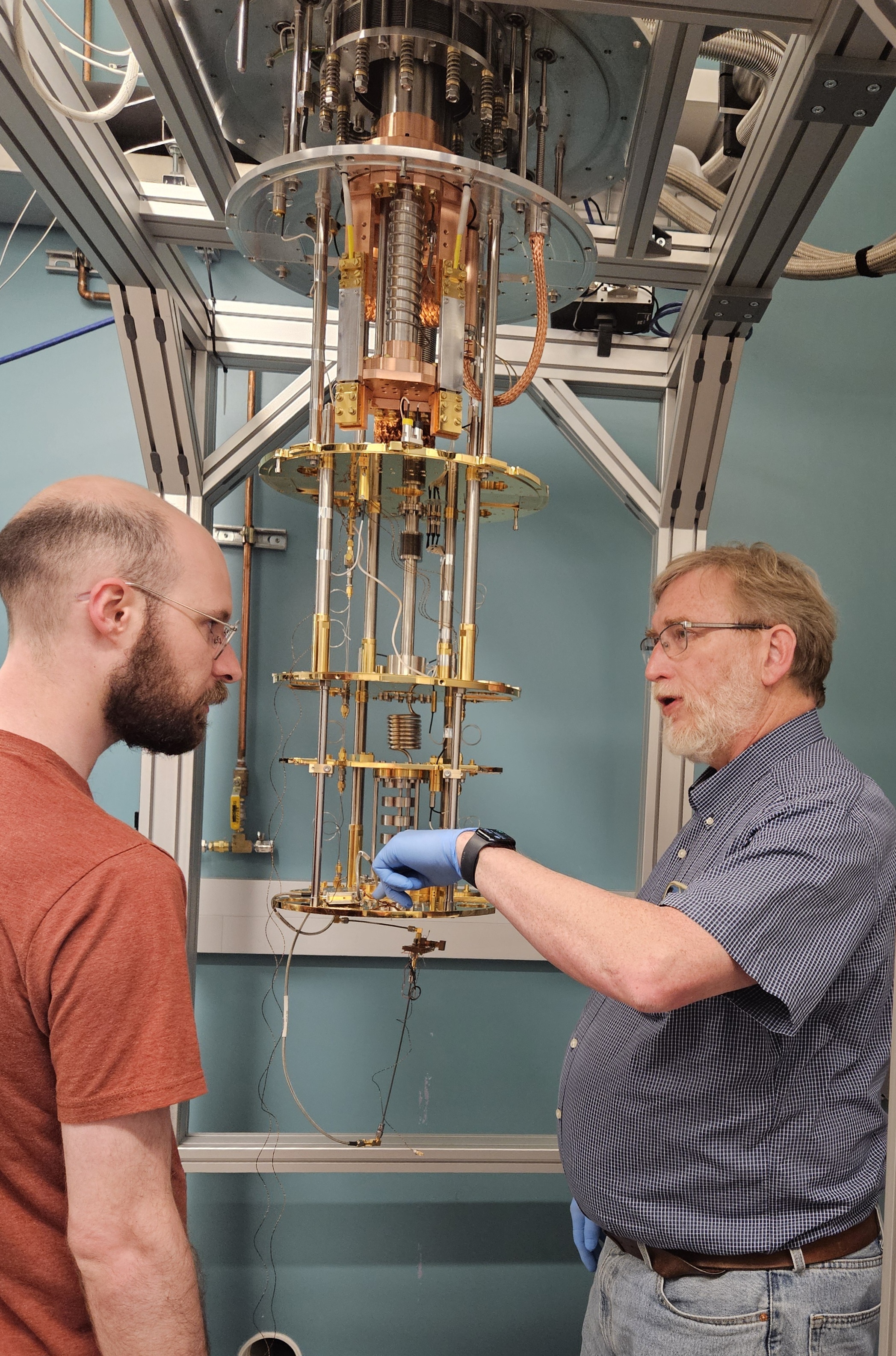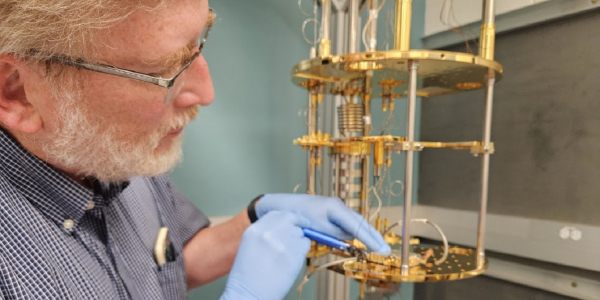A state-of-the-art dilution refrigerator has recently been installed in James Buckley's new research lab, providing a cooling capacity that is 300 times colder than outer space.
Operating at a temperature of 0.01 Kelvin (equivalent to -273 degrees Celsius), just above absolute zero, this refrigerator uses a mixture of helium isotopes to achieve these extremely low temperatures, far surpassing the cooling capabilities of conventional kitchen refrigerators that rely on compressing refrigerants.

James Buckley, professor of physics and a fellow of the McDonnell Center for the Space Sciences, is fascinated by the elusive nature of dark matter and its potential to reshape our understanding of the universe. Despite working on the problem for over 90 years, since Fritz Zwicky first identified dark matter from the anomalous motion of galaxies in the Coma cluster, physicists know little about the actual makeup of dark matter. It exerts a gravitational pull on everything around it, but has exceptionally weak interactions with ordinary matter. This absence of non-gravitational interactions makes it challenging to directly detect dark matter through conventional means and alternative approaches are necessary for studying and understanding it.
Measurements of the cosmic microwave background have revealed that dark matter, the dominant gravitational mass in the universe, cannot be composed of known atoms or particles, indicating the existence of at least one undiscovered fundamental particle. Theoretical physicists have proposed many dark matter theories to try to predict these extremely weak interactions between dark matter and regular matter. One hypothetical particle that could make up dark matter is the axion.
In particle physics, there is a problem in the theory of the strong force at work inside nuclei, a theory known as quantum chromodynamics. Theoretical physicists Roberto Peccei and Helen Quinn proposed a resolution of this strong CP (charge conjugation and parity symmetry) problem. They came up with a mechanism that would zero out the strong CP violating term in their theory. This term, if not zero, would result in measurements of things like the neutron electric dipole moment that were too small by 11 orders of magnitude - a factor of 100 billion.
Nobel Laureates Steven Weinberg and Frank Wilczek separately realized that this mechanism would result in a new particle which they called the axion that would have the properties to explain dark matter. These axions would interact with electromagnetism like the neutral pion by the Primakoff effect (after former WU physics professor Henry Primakoff) whereby axions can interact with static magnetic fields to produce observable photons.
“Our ADMX collaborator, Pierre Sikivie at the University of Florida, realized that this meant one could use large magnetic fields to detect these photons from axion conversion, of course only if they exist!” Buckley said. “But to detect these weak microwave photons you’d need to enhance the signal with a resonant cavity, cool to near absolute zero and use electronics so sensitive that the noise in these amplifiers is limited by the fluctuations in the vacuum of quantum electrodynamics. That’s what we try to do in my lab.”
Experimental physicists have built hypersensitive detectors sensitive to specific interactions to try to prove or disprove the existence of these particles. And that's what makes a dilution refrigerator so valuable to quantum physicists. They are extremely expensive and rare, even within physics laboratories. Generous funding from the McDonnell Center for the Space Sciences, Fermilab, and the Department of Energy (DOE) has allowed for the acquisition of new equipment.
The refrigerator is so cold that the remaining electromagnetic noise is limited by quantum mechanical fluctuations of the vacuum. Within such very cold spaces, a team of scientists can test detectors and electronics designed to identify the incredibly low power levels (<10-22 watts) associated with axion dark matter. It's an important milestone for the lab, designed to develop the new technology required to detect axion dark matter and conduct extremely low-noise quantum electronic experiments.
In addition to operation at the lowest temperatures, very high magnetic fields are required to convert axions into measurable RF signals. Earlier this year, Buckley's lab added a 14 Tesla magnet as well.
“Like the Higgs mechanism led to the observation of a real particle, the Higgs Boson, that interacted according to predicted theoretical rules, we hope to see these axions resulting from the Peccei-Quinn theory that follow the predicted rules of interaction with electromagnetism," said Buckley. “The bonus is that these same axions will exist with a relic density that could also explain dark matter.
“If we succeed, this would be a huge discovery in both particle physics and cosmology. In our physics department most work is focused on applications of known physics - this is something different - this is so-called fundamental physics. Discoveries are guided by theory but not guaranteed, but have the potential to change our understanding of the fundamental laws of the universe."
"This is science at its best - come up with a theory with falsifiable predictions, then build experiments to either confirm or rule out the theory."
Buckley's research could pave the way for revolutionary breakthroughs in our understanding of the universe, informing our knowledge of fundamental forces and shaping the course of future explorations.
Additionally, the lab presents valuable opportunities for both PhD students and undergraduates to gain experience in ultra-low-temperature physics and the operation of dilution refrigerators, skills that are highly sought after in emerging fields such as quantum sensing, quantum computing and quantum information science.





